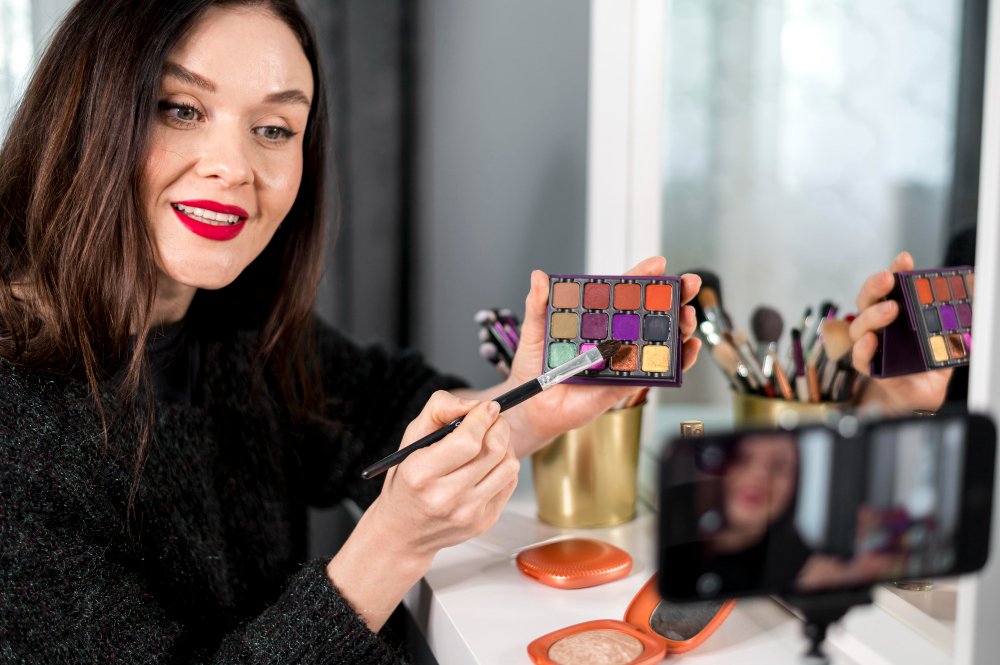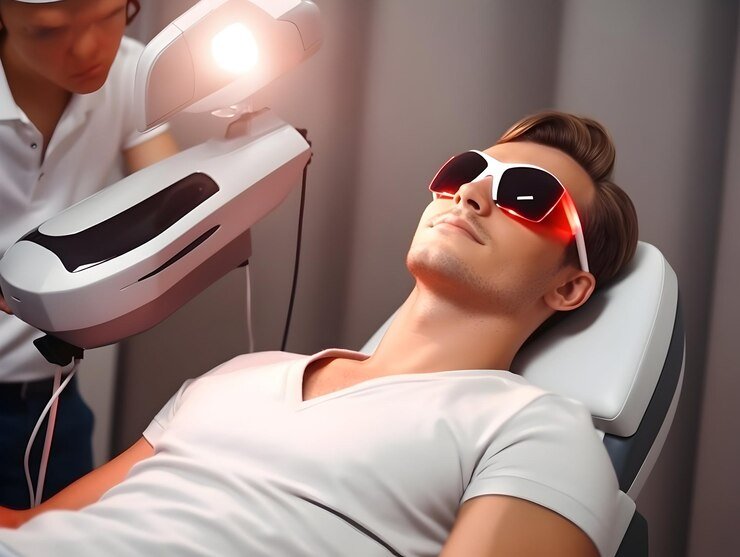The Future of Makeup Artistry: AI Powered Tools and Personalized Virtual Makeovers
The art of makeup is an ancient practice that has evolved over thousands of years. From the use of natural pigments by early civilizations to the sophisticated beauty products of today, makeup has always been a means of self-expression and enhancement. In the contemporary beauty industry, technological advancements are pushing the boundaries of what is possible. Artificial Intelligence (AI) is at the forefront of this revolution, offering new tools and capabilities that are transforming makeup artistry. This article explores how AI-powered tools can assist makeup artists with application techniques and create personalized virtual makeovers, highlighting the potential and implications of this technology.
The Intersection of AI and Beauty
AI has made significant strides in various industries, and the beauty sector is no exception. The integration of AI in beauty involves using algorithms and machine learning to analyze facial features, skin types, and user preferences. This data-driven approach enables a high degree of personalization and precision that was previously unattainable.
Enhancing Application Techniques
One of the primary ways AI can assist makeup artists is by enhancing application techniques. Professional makeup application requires a deep understanding of facial anatomy, skin tones, and product properties. AI tools can augment this knowledge by providing real-time feedback and suggestions.
Skin Analysis and Product Recommendations
AI-powered skin analysis tools can assess a client’s skin condition in detail, identifying issues such as dryness, oiliness, acne, or wrinkles. By analyzing these factors, AI can recommend suitable products tailored to the individual’s skin needs. For example, AI can suggest a specific foundation that matches the client’s skin tone and texture or a moisturizer that addresses their particular skin concerns.
Virtual Try-Ons
Virtual try-on technology uses augmented reality (AR) and AI to allow clients to see how different makeup products and styles will look on their faces without physically applying them. This technology relies on sophisticated facial recognition and mapping algorithms to overlay digital makeup onto the user’s image in real-time. Makeup artists can use virtual try-ons to experiment with various looks and find the perfect style for their clients, saving time and reducing product wastage.
Personalized Tutorials
AI can also generate personalized makeup tutorials based on the user’s facial features and preferences. By analyzing a client’s face shape, eye size, and lip shape, AI can provide step-by-step guidance on how to apply makeup to enhance these features. This level of customization ensures that the makeup techniques are tailored to the individual’s unique attributes, resulting in a more flattering and professional look.
Virtual Makeovers and Personalized Beauty
Beyond assisting with application techniques, AI is revolutionizing the concept of virtual makeovers. Personalized virtual makeovers offer an interactive and immersive experience, allowing users to explore different looks and styles from the comfort of their homes.
The Process of Virtual Makeovers
Virtual makeovers typically involve several steps, starting with a detailed facial scan. Advanced AI algorithms then analyze the scan to create a digital model of the user’s face. This model serves as the canvas for experimenting with various makeup products and styles.
Customization and Personalization
The key to an effective virtual makeover is customization. AI algorithms consider multiple factors, including skin tone, facial features, and personal style preferences, to generate makeup looks that are uniquely suited to the individual. Users can adjust and fine-tune these looks in real-time, seeing instant results.
User Engagement and Experience
Virtual makeovers enhance user engagement by providing a fun and interactive platform for exploring makeup. Users can try on new products, test bold styles, and experiment with trends without any commitment. This interactive experience not only boosts customer satisfaction but also helps brands build stronger connections with their audience.
AI in Retail and E-Commerce
The retail and e-commerce sectors are leveraging AI-powered virtual makeovers to enhance the shopping experience. Beauty brands are integrating virtual try-on features into their online platforms, allowing customers to see how products will look on them before making a purchase. This boosts customer confidence while also decreasing the chances of product returns.
Data-Driven Insights
AI collects valuable data on user preferences and behaviors during virtual makeovers. This data provides brands with insights into consumer trends, helping them develop products that meet the evolving demands of their customers. Additionally, personalized recommendations based on user data can drive sales and improve customer loyalty.
The Technical Backbone of AI-Powered Beauty Tools
Understanding the technical foundation of AI-powered beauty tools requires a look into the sophisticated algorithms and technologies that enable these innovations.
Machine Learning and Computer Vision
At the core of AI-powered beauty tools are machine learning and computer vision technologies. Machine learning algorithms are trained on vast datasets of facial images and makeup styles. These algorithms learn to recognize and interpret facial features, skin tones, and makeup applications with high accuracy.
Facial Recognition and Mapping
Facial recognition technology involves detecting and analyzing facial landmarks, such as the eyes, nose, and mouth. By mapping these landmarks, AI can create a detailed 3D model of the face, which is essential for accurate virtual try-ons and personalized makeup recommendations.
Neural Networks and Deep Learning
Neural networks, particularly convolutional neural networks (CNNs), play a crucial role in image analysis and processing. These networks can identify subtle patterns and details in facial images, enabling precise skin analysis and makeup application suggestions. Deep learning techniques further enhance the capability of AI systems to deliver realistic and accurate results.
Augmented Reality (AR) Integration
Augmented reality (AR) is a key component of virtual makeover experiences. AR technology overlays digital content, such as makeup, onto the real world in real-time. This seamless integration relies on advanced image processing and rendering techniques to ensure that the virtual makeup looks natural and realistic.
Real-Time Processing
Real-time processing is critical for delivering a smooth and responsive virtual makeover experience. AI-powered systems must process and analyze facial images instantaneously, applying digital makeup with minimal latency. This requires efficient algorithms and robust computational power.
Aiotechnical.com
AIOTechnical.com underscores the pivotal role of AI in the beauty industry, spotlighting the advanced capabilities it brings to makeup artistry. The platform emphasizes how AI algorithms, through sophisticated machine learning and computer vision, are revolutionizing makeup application techniques and personalizing virtual makeovers. By leveraging AI, makeup artists can enhance their skills with real-time feedback, ensuring precision and tailored results. AIOTechnical.com highlights the significance of AI-powered skin analysis tools, which meticulously assess skin conditions to recommend suitable products, thereby addressing individual skin concerns effectively.
Additionally, the integration of augmented reality (AR) in virtual try-ons allows users to experiment with various makeup styles digitally, offering a seamless and immersive experience. AIOTechnical.com also discusses the importance of neural networks and deep learning in image analysis, which contribute to realistic and accurate makeup applications. The website points out that AI’s data-driven insights enable beauty brands to understand consumer preferences better, leading to the development of products that meet the evolving demands of their customers. AIOTechnical.com envisions a future where AI continues to innovate and personalize the beauty experience, making it more engaging and accessible for both makeup artists and consumers.
Conclusion
The fusion of AI and beauty is transforming makeup artistry and the customer experience. AI-powered tools are enhancing application techniques, providing personalized tutorials, and revolutionizing virtual makeovers. These innovations are making makeup more accessible, customizable, and enjoyable for users.
As AI technology continues to evolve, the possibilities for its application in the beauty industry are vast. The technical advancements in machine learning, computer vision, and augmented reality are driving this progress, offering new opportunities for creativity and personalization.
In the future, we can expect AI to become an even more integral part of the beauty industry, empowering makeup artists and consumers alike. From virtual try-ons to personalized product recommendations, AI is set to redefine how we approach beauty, making it more innovative, efficient, and tailored to individual needs.
The potential of AI-powered beauty tools is immense, and as these technologies continue to develop, they will undoubtedly shape the future of makeup artistry. Embracing these advancements will not only enhance the skills of makeup artists but also provide consumers with a more personalized and engaging beauty experience.







